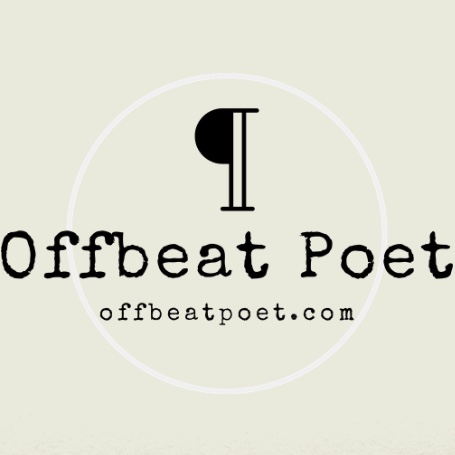Redacted Poetry 201: The History of Blackout Poetry
- Offbeat Poet

- Jun 3, 2019
- 4 min read
Updated: Jun 22, 2019
Blackout poetry or redacted poetry according to Bustle, is created when;
“…a poet takes a found document, traditionally a print newspaper, and crosses out a majority of the existing text, leaving visible only the words that comprise his or her poem; thereby revealing an entirely new work of literature birthed from an existing one” (Miller, 2017).
Made popular in recent years by Austin Kleon’s Newspaper Blackout and inspiring blackout poetry evangelists like Make Blackout Poetry, the lineage of blackout poetry or redacted poetry actually traces back the 18th Century.
According to Austin Kleon: Benjamin Franklin’s neighbor in the 1700s published an entertaining broadsheet of puns constructed with words read across the narrow columns of a newspaper, instead of down (Kleon, 2010). The hodgepodge sequence of words created playful puns, like MadLibs for the 18th Century. From that point forward, redacted poetry would meander through various countries and mediums.
Romanian-born French poet, born Samuel Rosenstock better known as Tristan Tzara (trisˈtan ˈt͡sara), founded Dadaism during the First World War, in Zurich. Dadaism was a nihilistic anti-art movement led by artists who expressed their discontent with violence, war, and nationalism by rejecting the logic, reason, and aestheticism of modern capitalist society through their works. Dada works spanned visual, literary, and sound media; from collage, sound poetry, cut-up writing, to sculpture. Since Dadaism is critical to the redacted art we know today, we’ll expand on it further, in a later post examining the Types and Forms of Poetry. For now, more about Tzara.
Throughout his lifetime, Tzara practiced many disciplines and was widely known as a French avant-garde poet, essayist, performance artist, journalist, playwright, literary and art critic, composer, and film director. In Paris, during the 1910s-20s, Tzara would often go on stage wearing a hat and holding newspapers. He would cut out words from the newspaper, put all the cut-outs in the hat, before drawing them out randomly and reading them out as a poem. This concept of piecing together prewritten words also emerged in a physical form by the hands of Brion Gysin and William S. Burroughs.
Brion Gysin was a painter, writer, sound poet, and performance artist who was well known for his cut-up method or technique when creating art. During the preparation of his canvas, Gysin accidentally cut through a stack of newspapers, creating a 3-dimensional effect with random words against the newspaper backdrop. Thus, cut-up poetry was born. Gysin’s work also ignited the creativity and success of his friend, William S. Burroughs.
Burroughs was an American writer and visual artist. A prominent Beat Generation leader and postmodernist author, Burroughs influenced a variegated range of popular culture and literature. During his time, Burroughs pieced together eighteen novels and novellas, had six collections of short stories, and a collection of four essays that he wrote. His creativity knew no limits. His acclaimed “Gunshot Paintings” and thousands of other visual artworks, solidified his place as an incredible artist. William adopted a cut-up in his writing method, in which he would take up a piece of writing, cut it up into several pieces, and reconstruct the pieces to form a new piece. From the 18th Century to the 20th Century, redacted art continued to evolve, progressing through written and visual art forms, leading to an English painter, printmaker, and collagist, Tom Phillips.
London native, Tom Phillips is well-known for his work A Humument. This happened when he was on a visit to a bookshop, hoping to buy a cheap book for his next art project. He came across a novel called A Human Document, written by the Victorian author, William Hurrell Mallock. Phillips, then, began a long project of creating art from its pages. He’d paint, collage, or draw over the pages leaving some of the text peeking through in serpentine bubble shapes, creating a “found” text with its own story — different from the original. He has used this technique for a lot of his other works using Mallock’s book as his source material.
Through invention and gradual, but steady, modeling and remodeling of the art form, found poetry evolved and grew. Thanks to these innovative artists, the groundwork for the various forms of found poetry we know about today, was laid in the early days.
Interested in learning more about blackout poetry?
Continue your poetry and writing journey and add more tools to your writer’s toolkit by visiting Offbeat Poet Blog
Follow the Offbeat Poetry publication by Offbeat Poet on Medium.
A Note from the Author
This article was written and posted to spread awareness and understanding of alternative types of poetry. Austin Kleon and Tristian Tzara have been instrumental in molding my view of creativity and self-expression. I strongly recommend exploring their works. Without their courage and dedication to the art, many of today’s artists, poets, and writers like myself, would not have a creative foundation to build on for the future.
Additional Reading
References & Image Sources
“Brion Gysin.” Visual Melt, visualmelt.com/Brion-Gysin. [2] image source
Kleon, Austin. “Austin Kleon Blog.” Austin Kleon, 2 Apr. 2019, austinkleon.com/.
Kleon, Austin. “Newspaper Blackout.” Newspaper Blackout, newspaperblackout.com/.
Kleon, Austin. “Steal Like an Artist.” TEDxKC, 23 April 2019, https://www.youtube.com/watch?v=oww7oB9rjgw
Kleon, Austin. Newspaper Blackout. Harper Perennial, 2010.Miller, C. E. “Blackout Poetry Is A Fascinating Art Form You Can Try At Home Right Now.” Bustle, Bustle, 28 Aug. 2017, www.bustle.com/p/what-is-blackout-poetry-these-fascinating-poems-are-created-from-existing-art-78781.
Saunders, Richard [Benjamin Franklin]. The Way to Wealth, and a Plan by which Every Man may pay his Taxes. Philadelphia: Printed by Daniel Humphreys, 1785. Rare Book & Special Collections Division, Library of Congress (53A). [1] image reference
Xerri, Steve. “A Humument.” Tom Phillips, www.tomphillips.co.uk/works/artists-books/item/5286-a-humument. [3] image source















Comments